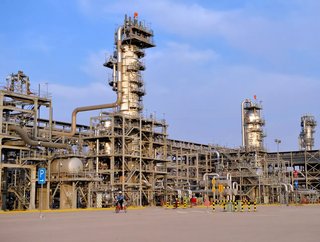Saudi Aramco's Q3 net income rises to $30.4 billion

Saudi Aramco capitalised on rising oil prices to post a net income of $30.4 billion in the third quarter.
Despite global economy headwinds and supply chain bottlenecks, it is optimistic that energy demand will remain healthy for the foreseeable future. The income rebound compares with $11.8 billion in Q3 2020 and sent its valuation above $2 trillion, according to reports, with free cashflow totalling $28.7 billion.
Aramco achieved 99.7% reliability in the delivery of crude oil and other products in the quarter and recorded total hydrocarbon production of 12.9m bpd, including average crude oil production of 9.5m bpd.
The Hawiyah Gas Plant (pictured) expansion project reached advanced stages of construction and is expected to be onstream in 2022. A dividend of $18.8 billion will be paid in Q4.
Aramco President & CEO Amin H. Nasser, said: “Our exceptional third quarter performance was a result of increased economic activity in key markets and a rebound in energy demand, as well as our unique low-cost position, our financial discipline and our proven ability to reliably deliver essential energy and chemical products to our customers.
“Looking ahead, we are maintaining our strategy to invest for the long term, and we will build on our track record of low-cost and low-carbon intensity performance to advance our recently announced ambition to achieve net-zero Scope 1 and Scope 2 greenhouse gas emissions across our wholly-owned operated assets by 2050.”
Capital expenditure totalled $7.6 billion in Q3, representing a 19% increase year-on-year. This increase was primarily due to ongoing crude oil increment and other development projects. Aramco maintains a flexible approach to capital allocation and continues to expect 2021 capital expenditure to be approximately $35 billion.
On August 15, the financial close for the 1.5 GW Sudair Solar PV plant, in which Aramco holds a 30% stake through its wholly-owned subsidiary Saudi Aramco Power Company (SAPCO), was announced. The project, in partnership with ACWA Power and Water & Electricity Holding Co. (Badeel), a company owned by the Public Investment Fund (PIF), will be one of the largest solar plants in the region.
Aramco’s investment marks its first participation in PIF’s renewable energy program, reflecting the company’s efforts to advance sustainable energy solutions. The first phase of the project is expected to begin producing electricity during the second half of 2022.
On September 7, Aramco announced a major expansion of its industrial investment program, Aramco Namaat, with the signing of 22 new Memoranda of Understanding and one joint venture agreement. The program is focused on capacity building in four key sectors: sustainability, technology, industrial and energy services, and advanced materials.
The Namaat program aims to ensure greater reliability of energy supply and effectively localize the industrial supply chain, while targeting new opportunities to achieve carbon footprint reduction and implement circular carbon economy concepts. Namaat complements the Company’s flagship In-Kingdom Total Value Add (iktva) localization program, as well as the government’s Shareek program.
Aramco’s Abqaiq oil processing facility, the largest oil processing plant in the world, became the Company’s third facility to be added to the World Economic Forum’s Global Lighthouse Network, which recognises industrial sites that have successfully adopted and scaled up cutting-edge technologies of the Fourth Industrial Revolution.
On September 27, Jazan Integrated Gasification and Power Company (JIGPC), a joint venture consisting of Saudi Aramco Power Company (SAPCO), Air Products, ACWA Power and Air Products Qudra signed agreements for the $12 billion acquisition and financing of the Jazan Integrated Gasification Combined-Cycle (IGCC) power plant, an Air Separation Unit and certain ancillary assets from Aramco located in Jazan Economic City.
The joint venture aims to enhance the overall value of the Jazan refinery and the IGCC power plant, aiding in transforming the Jazan Province and positioning it for additional foreign investment and private sector involvement.
The market for the Saudi Arabia oil and gas midstream market is expected to register a CAGR less than 5.51% during the forecast period of 2020–2025, according to Mordor Intelligence. Factors such as increasing oil and gas production, the government's push to invest in the pipelines, and the growing consumption of oil and gas are expected to boost the demand for the Saudi Arabia oil and gas midstream market. However, the policy to "artificially reduce the production" to increase the price of oil has reduced the required capacity of the pipeline and thereby impeded the growth in the market.
Last month The Public Investment Fund (PIF) unveiled The Rig, a tourism project inspired by offshore oil platforms, which will span a combined total area of more than 150,000sqm and provide a multitude of hospitality offerings, adventures, and aquatic sporting experiences.






